Solar eclipse of August 2, 2027
| Solar eclipse of August 2, 2027 | |
|---|---|
 Map | |
| Type of eclipse | |
| Nature | Total |
| Gamma | 0.1421 |
| Magnitude | 1.079 |
| Maximum eclipse | |
| Duration | 383 sec (6 m 23 s) |
| Coordinates | 25°30′N 33°12′E / 25.5°N 33.2°E |
| Max. width of band | 258 km (160 mi) |
| Times (UTC) | |
| Greatest eclipse | 10:07:50 |
| References | |
| Saros | 136 (38 of 71) |
| Catalog # (SE5000) | 9568 |
A total solar eclipse will occur on August 2, 2027. The path of the eclipse will pass over all the countries of north Africa and the middle east. The path includes Jeddah, Mecca, Saudi Arabia, and Sana'a, Yemen. For Tunisia, this total eclipse, which is the first of three total eclipses which will be observed in its territory in the 21st century, will be visible in the central part of the country and the maximum will occur over the Kerkennah Islands. The maximum of totality will be 5min 48sec in the southern part of these islands.
The maximum duration of totality will be observed in Egypt, in the east of Luxor and will be 6min 22sec.
Images

Animated path
Related eclipses
Solar eclipses 2026-2029
Each member in a semester series of solar eclipses repeats approximately every 177 days and 4 hours (a semester) at alternating nodes of the Moon's orbit.
| Ascending node | Descending node | |||||
|---|---|---|---|---|---|---|
| 121 | February 17, 2026 Annular |
126 | August 12, 2026 Total | |||
| 131 | February 6, 2027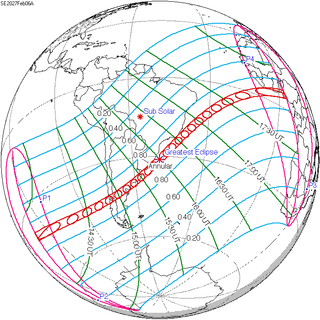 Annular |
136 | August 2, 2027 Total | |||
| 141 | January 26, 2028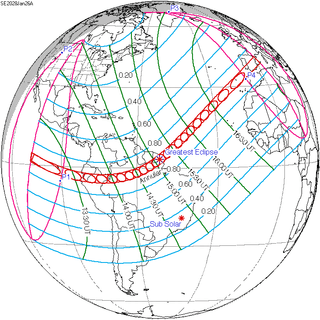 Annular |
146 | July 22, 2028 Total | |||
| 151 | January 14, 2029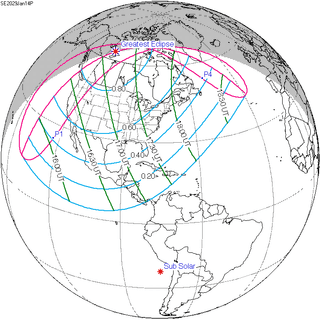 Partial |
156 | July 11, 2029 Partial | |||
| Partial solar eclipses on June 12, 2029, and December 5, 2029, occur in the next lunar year eclipse set. | ||||||
Saros 136
Solar Saros 136, repeating every 18 years, 11 days, contains 71 events. The series started with partial solar eclipse on Jun 14, 1360, and reached a first annular eclipse on September 8, 1504. It was a hybrid event from November 22, 1612, through January 17, 1703, and total eclipses from January 27, 1721 through May 13, 2496. The series ends at member 71 as a partial eclipse on July 30, 2622, with the entire series lasting 1262 years. The longest eclipse occurred on June 20, 1955, with a maximum duration of totality at 7 minutes, 8 seconds.[1]
Series members 29–42 occur between 1865 and 2100:
| 28 | 29 | 30 |
|---|---|---|
 April 25, 1865 |
 May 6, 1883 | |
| 31 | 32 | 33 |
 May 18, 1901 |
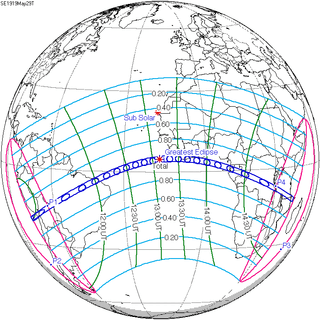 May 29, 1919 |
 Jun 8, 1937 |
| 34 | 35 | 36 |
 Jun 20, 1955 |
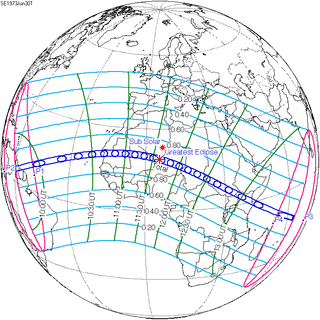 Jun 30, 1973 |
 Jul 11, 1991 |
| 37 | 38 | 39 |
 Jul 22, 2009 |
 Aug 2, 2027 |
 Aug 12, 2045 |
| 40 | 41 | 42 |
 Aug. 24, 2063 |
 Sep. 3, 2081 |
 Sep. 14, 2099 |
Metonic series
The metonic series repeats eclipses every 19 years (6939.69 days), lasting about 5 cycles. Eclipses occur in nearly the same calendar date. In addition the octon subseries repeats 1/5 of that or every 3.8 years (1387.94 days).
This series has 21 eclipse events between May 21, 1993 and May 20, 2069.
| May 20-21 | March 9 | December 25-26 | October 13-14 | August 1-2 |
|---|---|---|---|---|
| 118 | 120 | 122 | 124 | 126 |
 May 21, 1993 |
 March 9, 1997 |
 December 25, 2000 |
 October 14, 2004 |
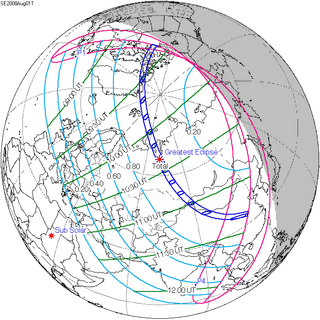 August 1, 2008 |
| 128 | 130 | 132 | 134 | 136 |
 May 20, 2012 |
 March 9, 2016 |
 December 26, 2019 |
 October 14, 2023 |
 August 2, 2027 |
| 138 | 140 | 142 | 144 | 146 |
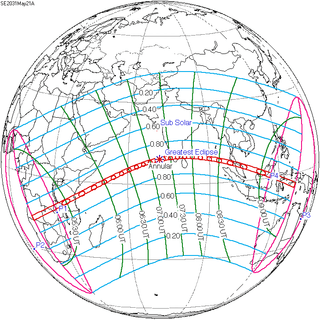 May 21, 2031 |
 March 9, 2035 |
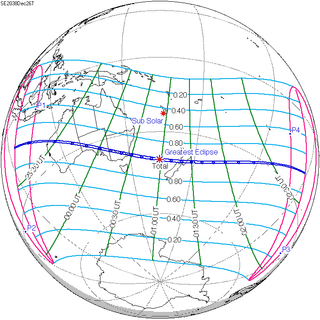 December 26, 2038 |
 October 14, 2042 |
 August 2, 2046 |
| 148 | 150 | 152 | 154 | 156 |
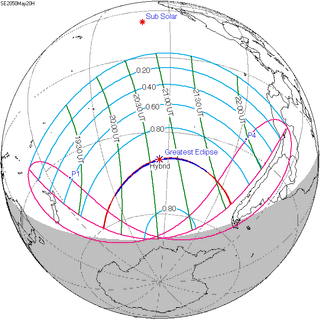 May 20, 2050 |
 March 9, 2054 |
 December 26, 2057 |
 October 13, 2061 |
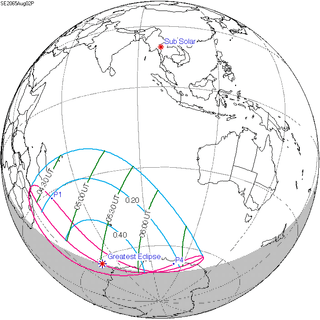 August 2, 2065 |
| 158 | ||||
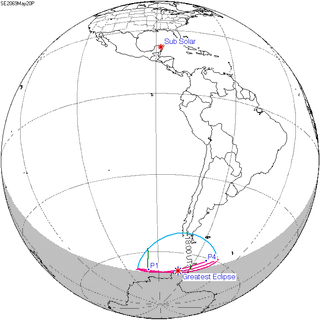 May 20, 2069 |
References
| Wikimedia Commons has media related to Solar eclipse of August 2, 2027. |

